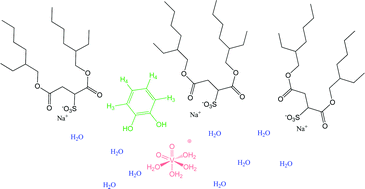Stabilization of a vanadium(v)–catechol complex by compartmentalization and reduced solvation inside reverse micelles†‡
Abstract
The kinetics of 1 : 1 complex formation and

- This article is part of the themed collection: “All Aboard” – contributions from NJC Board members

 Please wait while we load your content...
Please wait while we load your content...